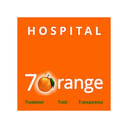Conservative Cardiology - Know Procedure Of It!
The heart is the most important among the vital organs within the human body. The functioning of all the other vital organs also depends on this and thus cardiology is a mightily important subject as it deals in all the problems and abnormalities of the heart.
What is conservative cardiology?
Cardiology is classified primarily into two disciplines, namely invasive and conservative. As the name implies, conservative cardiology is about taking the minimum steps to get the most out of this discipline without the involvement of major surgeries or other procedures. This is done to minimize risks, quicken healing time and be less painful to the patient.
How conservative cardiology works?
Conservative cardiology isn't just a procedure to resolve a certain issue, but a whole type of approach towards resolving cardiac problems. All parts, from diagnostic to therapy have a different approach compared to invasive cardiology. Let's take a look at those parts.
Diagnostic methods
Some of the diagnostic methods may be similar to invasive cardiology as this is usually the first step in finding the problems with your heart. These are mostly non-invasive body and heart examinations. Most of these exams will use:
- A high resolution, state-of-the-art 4D ultrasound scanner
- A CAT scanner with contrast agent to find blockages.
Although invasive cardiology uses the same technology now in most cases, there are other invasive methods to detect blockages. One example of this is the cardiac catheter, which has to be physically inserted into the body for detection of problems.
Therapy for conservative cardiology
Therapy is the actual area where invasive and conservative methods stand out from each other. Conservative cardiology espouses the approach of minimum surgery. It doesn't even follow surgeries like angioplasty which is minimally invasive. Some of the techniques that Conservative cardiology relies upon are:
- Medications
- Lifestyle changes
- Physiotherapy and exercising
- Constant maintenance
- Changes in nutrition to control and lessen risks
- Reducing stress and other contributing factors of heart disease.
Conservative cardiology takes a more of a preventative approach, the moment a problem is diagnosed. It tries to minimize or at least keep the problem in check by instituting smaller changes. Exercise regimens, relaxation routines, diet changes are all a part of this. However, the most important weapons are medications which reduce the imminent danger of cardiac arrests or other cardiac problems. These smaller changes along with medications ensure that the larger problems, for which surgeries may be required, never arise in the first place.



+1.svg)
